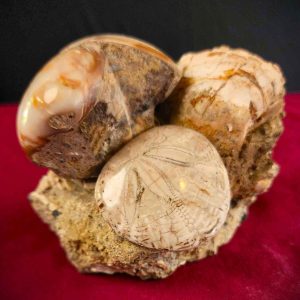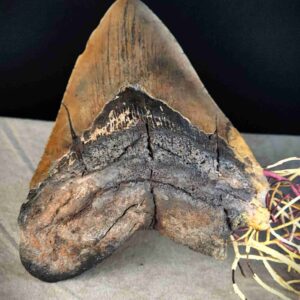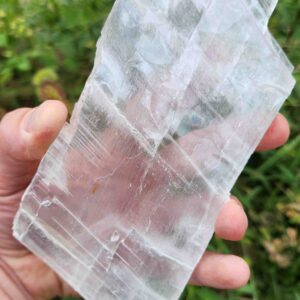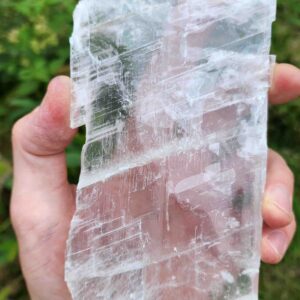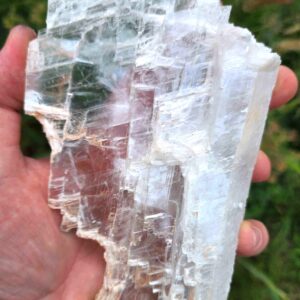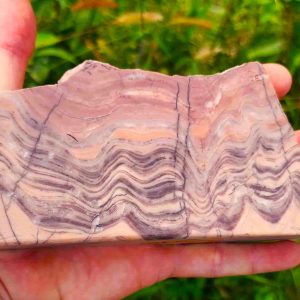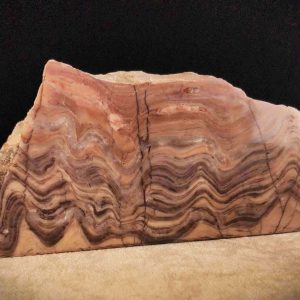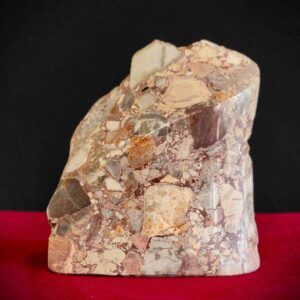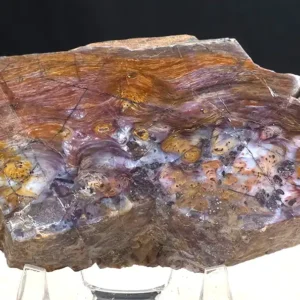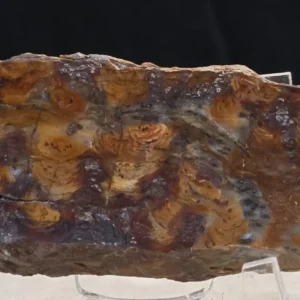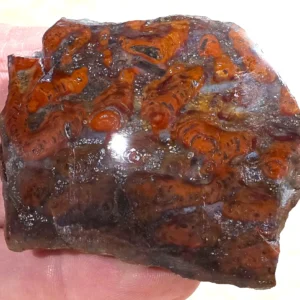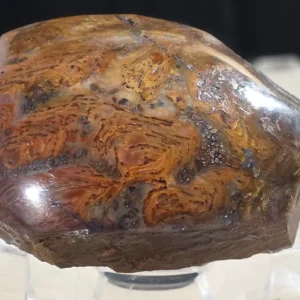All Products
-
Fossil Sand Dollar and Clam (KH9)
Notes specific to this specimen: One large polished sand dollar with two great polished clams. Matrix piece that has a flat bottom so it stands nicely.
SIZE: 4″x 2″x 3″
NAME: Psuedocardium & Dendraster
AGE: Pliocene 4 million years
UNIT: Etchegoin Formation
SITE: Kettleman Hills, CaliforniaDocuments: This authentic fossil specimen comes with a Certificate of Authenticity and Origin. In addition, an attractive and informative display card accompanies the specimen.
$395.00 -
Giant Fossil Shark Tooth with Coral
Notes specific to this specimen: An incredible find! Beautiful huge megalodon shark tooth with soft coral attachment. This 5 1/2″ specimen was discovered in 2000 on the bottom of the ocean off North Carolina and has been kept as found. It was discovered by the greatest shark tooth hunter ever – the late, great, Vito Bertucci – aka “Megalodon Man”. Vito was from the East Coast and well known as the most active collector of giant shark teeth ever and the creator of the largest shark jaw ever assembled. He passed away in 2004 while diving for teeth in the Ogeechee River, Georgia. There is some stabilization in the root but nothing has been done to the tooth itself other than cleaning it. Care has been taken to conserve the piece intact. Even the purple color of the soft coral is preserved. We traded for this from a private collector.
Tooth Size: 5 1/2″
NAME: Otodus megalodon
AGE: Miocene Epoch, 15 million years
SITE: Atlantic Ocean, North Carolina
DATE: 2000Documentation: This authentic fossil specimen comes with a Certificate of Authenticity and Origin.
$2,250.00Giant Fossil Shark Tooth with Coral
$2,250.00 -
Gypsum, Variety Selenite (AG1)
Notes specific to this specimen: Large crystals with nearly optical clarity. Modified rhomboid shape with nice clear crystal and no inclusions. Mirror shine faces, no scratches.
Size: 7″ x 3″ X 1″
NAME: Gypsum, variety Selenite
AGE: Triassic Period, 240 million years
UNIT: Moenkopi Formation
SITE: Mohave County, Arizona
DATE: 2019Documentation: This authentic fossil specimen comes with a Certificate of Authenticity and Origin. In addition, an attractive and informative display card accompanies the specimen.
$185.00Gypsum, Variety Selenite (AG1)
$185.00 -
Gypsum, Variety Selenite (AG3)
Notes specific to this specimen: Clean large rhomboidal crystal shape that is common in these crystals but not found in this size with this clean quality. Nice clear crystal with no inclusions. Mirror shine faces, no scratches.
Size: 6″ x 3″ X 1″
NAME: Gypsum, variety Selenite
AGE: Triassic Period, 240 million years
UNIT: Moenkopi Formation
SITE: Mohave County, Arizona
DATE: 2019Documentation: This authentic fossil specimen comes with a Certificate of Authenticity and Origin. In addition, an attractive and informative display card accompanies the specimen.
$185.00Gypsum, Variety Selenite (AG3)
$185.00 -
Gypsum, Variety Selenite (AG7)
Notes specific to this specimen: Very complex large modified rhomboid crystal pattern with mirror-clean faces. Nice clear crystal selenite with no inclusions. The very edges of some of the crystals show some wear but this only accents the beauty of the overall piece.
Size: 6″ x 4″ X 1″
NAME: Gypsum, variety Selenite
AGE: Triassic Period, 240 million years
UNIT: Moenkopi Formation
SITE: Mohave County, Arizona
DATE: 2019Documentation: This authentic fossil specimen comes with a Certificate of Authenticity and Origin. In addition, an attractive and informative display card accompanies the specimen.
$280.00Gypsum, Variety Selenite (AG7)
$280.00 -
Kona Dolomite (KONA10)
Notes specific to this specimen: This is an excellent sliced section showing multiple stromatolite colonies with distinct layers (laminae). The clear layering is unusual for this slightly metamorphosed material. It has a smooth back and a flat bottom so it stands up nicely.
SIZE: 6″ x 3″ x 1″
NAME: Collenia kona
AGE: Paleoproterozoic Era 2.3 billion years
UNIT: Kona Formation
SITE: Kona Hills, Michigan
DATE: 2023Documentation: This authentic fossil specimen comes with a Certificate of Authenticity and Origin.
$185.00Kona Dolomite (KONA10)
$185.00 -
Kona Dolomite (KONA9)
Notes specific to this specimen: This is an excellent sliced section showing multiple stromatolite colonies with distinct layers (laminae). The clear layering is unusual for this slightly metamorphosed material. It has a smooth back and a flat bottom so it stands up nicely.
SIZE: 6″ x 3″ x 1″
NAME: Collenia kona
AGE: Paleoproterozoic Era 2.3 billion years
UNIT: Kona Formation
SITE: Kona Hills, Michigan
DATE: 2023Documentation: This authentic fossil specimen comes with a Certificate of Authenticity and Origin. In addition, an attractive and informative display card accompanies the specimen.
$245.00Kona Dolomite (KONA9)
$245.00 -
Potomac Marble Sculpture
Notes specific to this specimen: You won’t find this on the market anywhere! Why? Because we are the only people who excavate and sculpt this beautiful and unusual historic material. Also called Capitol Marble, this Triassic conglomerate is featured as the columns in the US Capitol National Statuary Hall rotunda. They hold up the main Capitol Dome. Interestingly, the location of the quarry where this material was mined was lost for 200 years. But the old quarry site was finally found a few years ago. We visited the site which is along the C & O canal (near milepost 38) in 2024. It hosts the exact same rock we collect for carving at Point of Rocks, some 12 miles upstream where this piece is from. This freeform was sculpted by Jon in 2022 and has a flat bottom for easy display. It features a highly polished partial helix on the front and a contrasting natural back, showing how the rock is found in its rough state.
HOW IT FORMED
Paleozoic mountains that were being uplifted during the Triassic Period as North America and Africa were colliding. About 205 million years ago these rivers carried broken pieces of dolomite into a basin where they were buried. As the layers accumulated in depth, heat and pressure built up and eventually cemented everything together. Later the layers were pushed up and erosion removed the sediments above, exposing this unique rock in certain locations along the Potomac River.
SIZE: 6″ x 4″ x 6″
AGE: Triassic Period, 205 million years
UNIT: Newark Supergroup
SITE: Point of Rocks, Maryland
DATE: 2021Documentation: This authentic fossil specimen comes with a Certificate of Authenticity and Origin.
$525.00Potomac Marble Sculpture
$525.00 -
Rainbow Stromatolite (RS1)
Notes specific to this specimen: This is one of the original discovery pieces, collected by us in August 2025. It is characteristic of all the variety of colors found in this site. We’ve never seen such a variety of colors of stromatolite from a single site. It reminded us of all the colors of Arizona petrified wood – known as “Rainbow Wood” – and this became the source for our naming this new discovery “Rainbow Stromatolite”.
SIZE: 2″x 4″x 1.5″
Name Collenia sp. (possible new species)
Age Anamikean / Paleoproterozoic – 1.88 billion years
Unit Gunflint Iron Formation
Site Ontario, Canada
Date 2025Documentation: This authentic fossil specimen comes with a Certificate of Authenticity and Origin. In addition, an attractive and informative display card accompanies the specimen.
$285.00Rainbow Stromatolite (RS1)
$285.00 -
Rainbow Stromatolite (RS2)
Notes specific to this specimen: Another one of the original discovery pieces, collected by us in August 2025. Unusual wine coloring with distinct colonies.
SIZE: 1.5″x 4″x .5″
Name Collenia sp. (possible new species)
Age Anamikean / Paleoproterozoic – 1.88 billion years
Unit Gunflint Iron Formation
Site Ontario, Canada
Date 2025Documentation: This authentic fossil specimen comes with a Certificate of Authenticity and Origin. In addition, an attractive and informative display card accompanies the specimen.
$110.00Rainbow Stromatolite (RS2)
$110.00 -
Rainbow Stromatolite (RS3)
Notes specific to this specimen: Another one of the original discovery pieces, collected by us in August 2025. Deep red colonies surrounded by high iron hematite matrix.
SIZE: 2″x 2.58″x .75″
Name Collenia sp. (possible new species)
Age Anamikean / Paleoproterozoic – 1.88 billion years
Unit Gunflint Iron Formation
Site Ontario, Canada
Date 2025Documentation: This authentic fossil specimen comes with a Certificate of Authenticity and Origin. In addition, an attractive and informative display card accompanies the specimen.
$120.00Rainbow Stromatolite (RS3)
$120.00 -
Rainbow Stromatolite (RS4)
Notes specific to this specimen: Another one of the original discovery pieces, collected by us in August 2025. Unique honey-color colonies with unusual dark laminae. Never seen anything like this!
SIZE: 2″x 2″x .75″
Name Collenia sp. (possible new species)
Age Anamikean / Paleoproterozoic – 1.88 billion years
Unit Gunflint Iron Formation
Site Ontario, Canada
Date 2025Documentation: This authentic fossil specimen comes with a Certificate of Authenticity and Origin. In addition, an attractive and informative display card accompanies the specimen.
$165.00Rainbow Stromatolite (RS4)
$165.00

